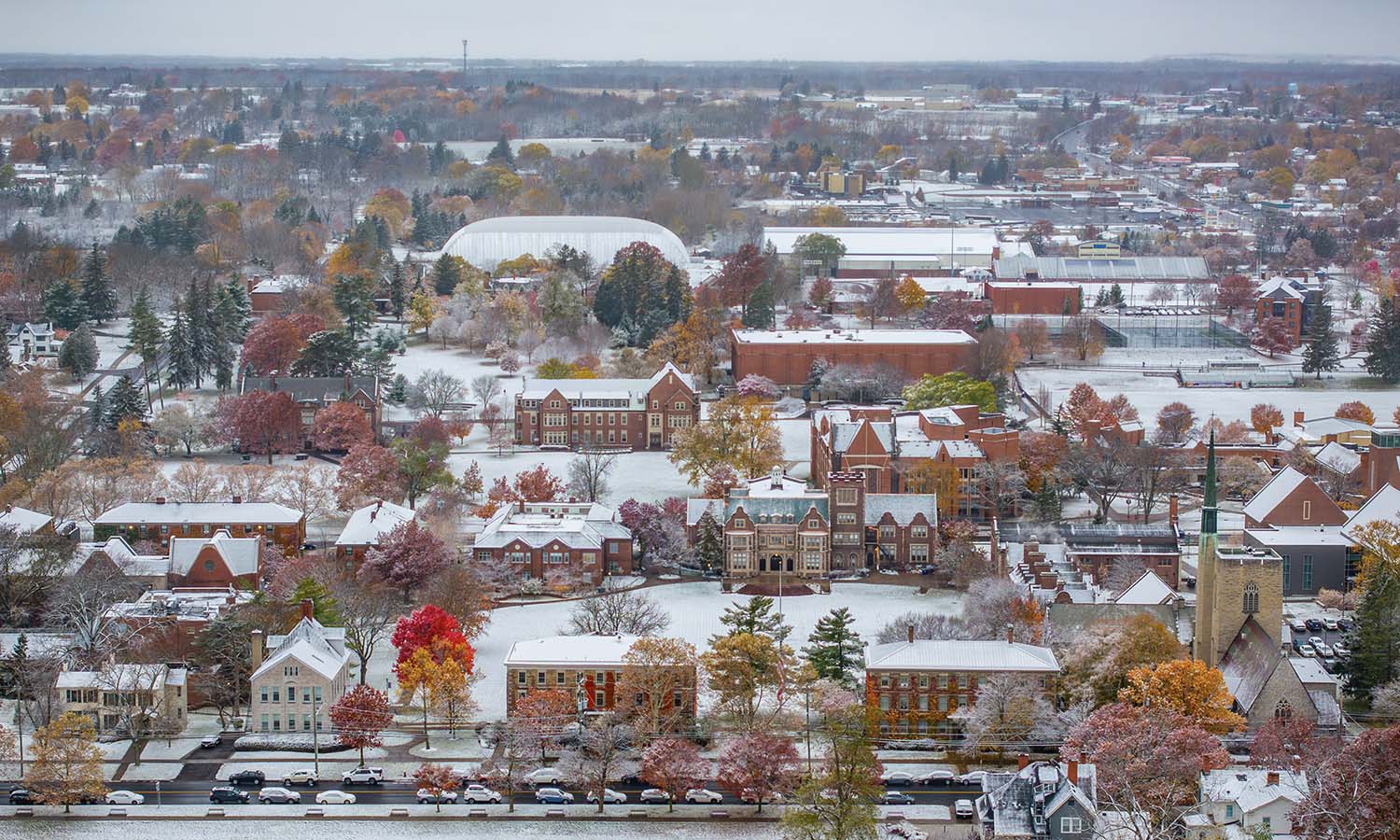
HWS News
7 October 2024 • Alums Mead '13 Featured in Rochester Business Journal
Spotlight on alumnus details start and growth of business that sprung from a concept developed as an HWS student.
Hempitecture co-founder Matthew “Mattie” Mead ’13 was recently featured in the Rochester Business Journal in an article, “Industrial hemp fights climate change by reducing carbon emissions,” that tells the story of the business he created during the Todd Feldman ’89 and Family Pitch Contest and has since developed into a full-fledged company.
Mead, who lives in Ketchum, ID, co-founded Hempitecture in 2018 as a hemp-based material business to create sustainable home and building materials. Since then, he has won the Grow-NY Food and Agriculture competition in 2022, and continues to expand his business in New York.
Read the story below:
Industrial hemp fights climate change by reducing carbon emissions
September 25, 2024
By Caurie Putnam
When Matthew “Mattie” Mead, founder of the hemp-based material business Hempitecture, shared the idea of using hemp as a sustainable construction material as a student in The Pitch at Hobart and William Smith Colleges competition in 2013, he didn’t win the entrepreneurial leadership contest.
“I recall specifically during the pitch contest, one of the judges saying, ‘So let me get this straight., you’re trying to build houses out of a Schedule 1 substance?” Mead said. “And indeed, industrial hemp was a Schedule 1 substance at the time.”
Mead’s response?
“Well, we’re the only industrial agriculture nation on earth that bans the production of this crop, and I want to be on the forefront of what I think will be an emerging industry in three to five years,” he said. “It definitely turned some heads and seemed outlandish, but I like to think that most good ideas do at first seem outlandish or impossible.”
In December 2018, the Federal Farm Bill that legalized industrial hemp was signed into law. That same year, Mead and his high school friend Tommy Gibbons founded Hempitecture. In 2022 when Mead pitched Hempitecture again at the Grow-NY Food and Agriculture competition in Syracuse he won $500,000.
“Hempitecture was founded based on the idea that buildings and their operations are responsible for forty percent of our carbon emissions,” Mead said. “So, it was really designed as a solution to store carbon in building materials. That’s really kind of the core notion of Hempitecture, reconciling embodied carbon and operational carbon.”
Mead, who majored in architectural studies and minored in environmental studies and studio art at Hobart and William Smith Colleges in Geneva, explains that Hempitecture’s products are designed to do two things: save energy and store carbon.
The buildings and construction industry is the largest emitter of greenhouse gases worldwide accounting for thirty-seven percent of global emissions, according to the UN report Building Materials and the Climate: Constructing a New Future published in 2023.
Mead says sustainable building materials like hemp are important because they lend to energy-efficient, energy-saving, high-performing homes and buildings and that translates to comfort. Examples of other sustainable building materials are bamboo, reclaimed wood, straw bale, and cork.
“Comfort is one of the most important elements that we seek in shelter and really our products speak to the different elements of comfort,” Mead said. “Moisture regulation, temperature regulation, and sound are the three pillars of comfort. With more sustainable materials that address those three pillars of comfort, we really believe that we can help improve the building environment and the buildings in which we spent over ninety percent of our lives inside.”
Hempitecture, in partnership with the non-profit Idaho BaseCamp, designed and built the United States’ first public-use hemp building: the Borah Basin Community Building outside of Mackay, Idaho.
It’s made of recycled and renewable building materials and hempcrete, a sustainable building material created in part from the stalks of the hemp plant, that absorbs carbon dioxide emissions and improves insulation.
While Hempitecture – a public benefit corporation – is based in Idaho, you can expect to see its presence in the Finger Lakes in the future.
In June 2024 NYS Governor Cathy Hochul announced $1.1M in funding to Hempitecture – part of $8.5M awarded for the development of innovative nature-based solutions to lower emissions and sequester carbon through Round 1 of the Natural Carbon Solutions Innovation Challenge.
Hempitecture was one of seven projects selected for funding, which will be administered by the New York State Energy Research and Development Authority (NYSERDA). The funding supports the State’s Climate Leadership and Community Protection Act goal to reduce greenhouse gas emissions by eighty-five percent by 2050.
The other awardees were Assembly OSM, Phytostone, Re-Nuble, the State University of New York College of Environmental Science and Forestry, SunThru and Syracuse University.
“Each year New York faces the challenges and risks associated with more frequent extreme heat events, which this new round of funding is designed to address,” said Doreen M. Harris, NYSERDA president and CEO in a press release. “We are excited to follow the progress of awarded projects and to see the new solutions brought forward with potential for lowering emissions that contribute to the ever-changing climate and reducing demands on the grid during times of excessive heat.”
Hempitecture Inc. will develop and manufacture an innovative bio-based insulation product using regionally grown industrial hemp fibers. The project will measure the performance, greenhouse gas emissions, and costs associated with the loose-fill low-carbon insulation. Product demonstration and manufacturing assessment will be in the Grow-NY Region.
“To serve the market for high-performance carbon-negative building products, we need to focus on a regional approach where we’re able to leverage local agriculture and sell to regional markets to keep the embodied carbon footprint of our product low or negative,” Mead said. “In New York State, Hempitecture has a few different opportunities, one of which is collaborating with NYSERDA.”
It’s a full-circle moment for Mead, who credits his time learning and living in the Finger Lakes as instrumental in creating the foundation for Hempitecture.
“It’s a place that I still care about today,” Mead said. “I think there’s so much potential in the Finger Lakes, and I think there’s also an ongoing Renaissance in the Finger Lakes that is bringing skilled jobs, new industry and an undercurrent of sustainability.”



